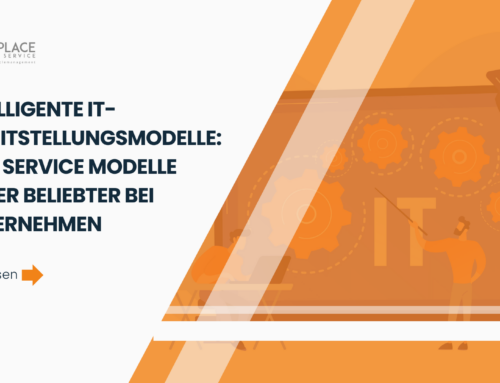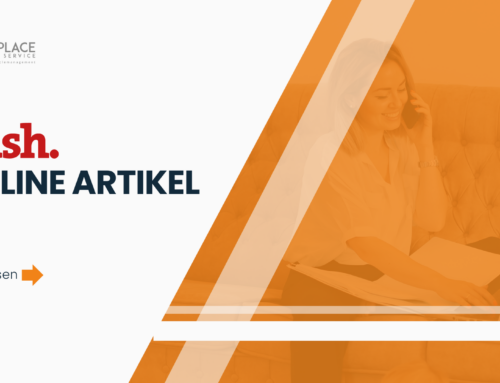Manuel Wagner
CEO of Cosh Consulting. The Nuremberg-based IT service provider specializes in proactive
IT solutions for companies in the upper midmarket and supports customers
with Workplace as a Service concepts: from the company’s own online self-service portal for hardware components and rentable IT workstations to service desk, on-premise server and storage systems and Microsoft’s hyperscaler Cloud Azure and the associated Microsoft365 products. With the “Workplace as a Service Enterprise” solution launched in January 2020, Cosh also offers a web configurator that digitizes and simplifies the sales funnel: from the standardization of migration processes and the selection of IT workplace components such as PCs, monitors and mice to the implementation and commissioning of the workplace.
Outsourcing IT processes enables companies to manage IT structure and administration without having to establish lengthy processes themselves. In this interview, Manuel Wagner from Cosh Consulting explains what can be outsourced, what advantages this brings and what to look out for before outsourcing. Interview: Diana Künstler
funkschau: Simplifying IT purchasing processes, reducing costs for support and maintenance, relieving the internal IT department: these are the challenges facing many companies. To what extent can targeted outsourcing help here?
Manuel Wagner: Efficient and thus cost-effective processes are achieved above all when there is a high degree of standardization and little administrative effort. This requires that the organization is appropriately structured and automated. An IT outsourcing company is dedicated to developing and executing these processes to perfection. The development time for such process efficiencies, both logically and in terms of personnel, costs a company some investment. By outsourcing, you buy in this intelligence directly. Furthermore, it must be noted that in many cases in basic IT operations the necessary personnel cannot be found on the market. This leads to additional costs due to the further qualification of the team or internal employees that is required for the time being. Driven by this shortage of skilled workers, internal IT departments are increasingly focusing on the application landscape and interfaces, because this is where direct added value can be generated for the company’s business area.
funkschau: Which IT processes can be outsourced at all?
Manuel Wagner: All routine processes that fall within the scope of basic IT are suitable for outsourcing. In addition to classic hardware processes such as IMAC (Install, Move, Add, Change), user-based processes can also be outsourced. In the Workplace area, these are primarily:
– First, the “joiner process,” or the onboarding of new employees. This also includes the initial provision of hardware, software licenses and access authorizations.
– The “mover process” describes the change within the company. This makes changes necessary, for example in licenses or the allocation of access authorizations. Mostly these are changes to licenses and access permissions.
– At the end, the “leaver process.” If an employee leaves the company, accesses have to be blocked or deleted, hardware taken back and licenses pooled.
In addition to these processes, companies are also increasingly outsourcing support hotlines for precisely defined services, such as hardware damage. Then the service provider takes over the handling of the problem. In general, almost all commodity services can be outsourced. These services describe standard or routine services that are often also automated.
funkschau: Outsourcing is often seen as an annoying necessity. How do you see it?
Manuel Wagner: It’s in the nature of us IT people to want to do everything ourselves and save money in the process. I know this and sometimes it works. The typical IT crack also sees the added cost of outsourcing and a lack of quality service. In fact, there is some truth in this fear. But just a little bit. Unfortunately, from a management perspective, the IT crack often doesn’t look at a variable. Namely themselves. From the company’s perspective, many more factors than cost and quality are involved in bringing about informed decisions about outsourcing or insourcing. Outsourcing is a strategic management decision on a planning horizon of at least three, if not five years. It is not for nothing that there are management consultancies that specialize in developing a sourcing mission statement for the future of the company.
funkschau: How much or what can you actually save with an as-a-service model?
Manuel Wagner: Basically, time can be saved above all. Developing a Workplace-as-a-Service model like ours in-house, with all the building blocks such as cost centers, service catalog, product management, purchasing platform and so on, would cost a company at least 2,000 person-days internally just for development. This effort can be saved by directly choosing a best practice model and implementing it. For a medium-sized company with 1,000 workplaces, a maximum of five percent of the aforementioned sum can be estimated for this.
funkschau: How long does it usually take to implement such a solution? How quickly can it be used?
Manuel Wagner: Commodity service outsourcing is worthwhile from around 100 workstations. Implementation times depend primarily on the sourcing depth. For a medium-quality process map, one can assume about 100 person-days per 1,000 IT workstations. From 5,000 users upwards, there are certainly further economies of scale. Complexity factors in the international environment can be added depending on the region. European countries are to be reckoned with a factor of 1.5, in the Asian area it is a factor of 3.
funkschau: What aspects should companies factor into their choice of the right rentable IT workstation solution? Keyword Inventory, Data Protection, Cost Transparency, Reliability
Manuel Wagner: I think you have already mentioned most of the important ones. Preliminary analyses and workshops on inventory, workshops on target image, data protection, regulatory requirements
– for example, KRITIS and BAIT (editor’s note: bank regulatory requirements for IT) -, transparent cost mapping, risk assessments, and so on. I assume that in every company the priorities are different, even if the disciplines are always the same. You should definitely invest initial time and money in workshops with the possible service providers, because this is where it usually becomes apparent where real added value can be achieved.
funkschau: Cosh has been offering its Workplace-as-a-Service enterprise solution “My Workplace” since January 2020. What are its distinguishing features?
Manuel Wagner: The special thing about us is that we not only deliver the actual outsourcing services, but also a management platform for them, which was developed together with IT departments and other outsourcing service providers. Through this interaction, we can save around 25 percent in total cost of ownership. The web platform handles all communication between the end users, the IT department, the business departments and the outsourcing provider. In this way, many administrative processes can be highly automated and thus cost-efficient. An example: The IT department decides that the workstations are to be replaced by the HR department with new ones in the next quarter. The project manager for this exchange creates a migration order in the web platform and selects the HR department. The platform automatically informs all department employees that they can choose new devices and sends along a store link. Once the employees have made their selection, an approval process starts which, if successful, triggers the order with the service provider/outsourcer. At the same time, the platform automatically informs several stakeholders connected with the migration, such as internal IT, by opening a ticket there, or purchasing or the purchasing system that a new order has been triggered. The special feature is that you don’t have a lengthy implementation period like with many business process automation (BPO) platforms, but the platform delivers the most important processes directly. funkschau: Which technology partners – both on the software and hardware side – do you work with and why? Wagner: We mainly work with our own technology. For the past four years, we have been developing the Workplace Enterprise platform, which enables a high level of digitalization in workplace management. For hardware, we work closely with Lenovo, Apple, Samsung and other global market leaders, as their portfolio is available internationally and the devices are known for their durability and build quality.
funkschau: Cosh Consulting has already implemented an IT lifecycle management concept with Berlin Hyp, a bank for real estate and mortgage bonds. What were the biggest challenges in this project? What were the biggest challenges in this project?
Manuel Wagner: With the support of Cosh Consulting, Berlin Hyp’s IT departments were able to outsource routine tasks and focus on their own digitization strategy and related projects. The main challenge was to transport and transfer the existing organization through the new roles of the bank’s employees in such a way that the end users perceived a smooth transition. One of the most important lessons learned was a positive one: our collaboration with Berlin Hyp once again confirmed that our Workplace concept, with its flexibility and scalability, works particularly well for larger companies. Even with more than 1,000 employees, Berlin Hyp maintains a clean and structured overview of all its Workplace assets, while end users benefit from Cosh’s fast response times and highly trained support staff.



